A weekly look at how the national and global vaccination programs are going. We're improving at getting vaccines into arms, but not improving as quickly as we should.
Before jumping into the data, some quick housekeeping. The data set continues to be drawn from Our World in Data and is based on CDC statistics. It remains reliable. I will continue to report on three areas: the global overview, herd-immunity in the US, and our vaccination efforts’ operational efficiency. I am going to assume a global population of 7.8 billion and set herd-immunity at 80%
Global
In the last week, the US has vaccinated an additional 8 million, China has added another 5 million, and India is finally on the chart, with 1.58 million. Globally we have immunized 63 million or roughly 0.8% of the population, up from 0.5%. At this amount of increase, we should reach herd immunity in slightly over five years. Basing a prediction on the rate change since last week gives us a very unrealistic calculation.
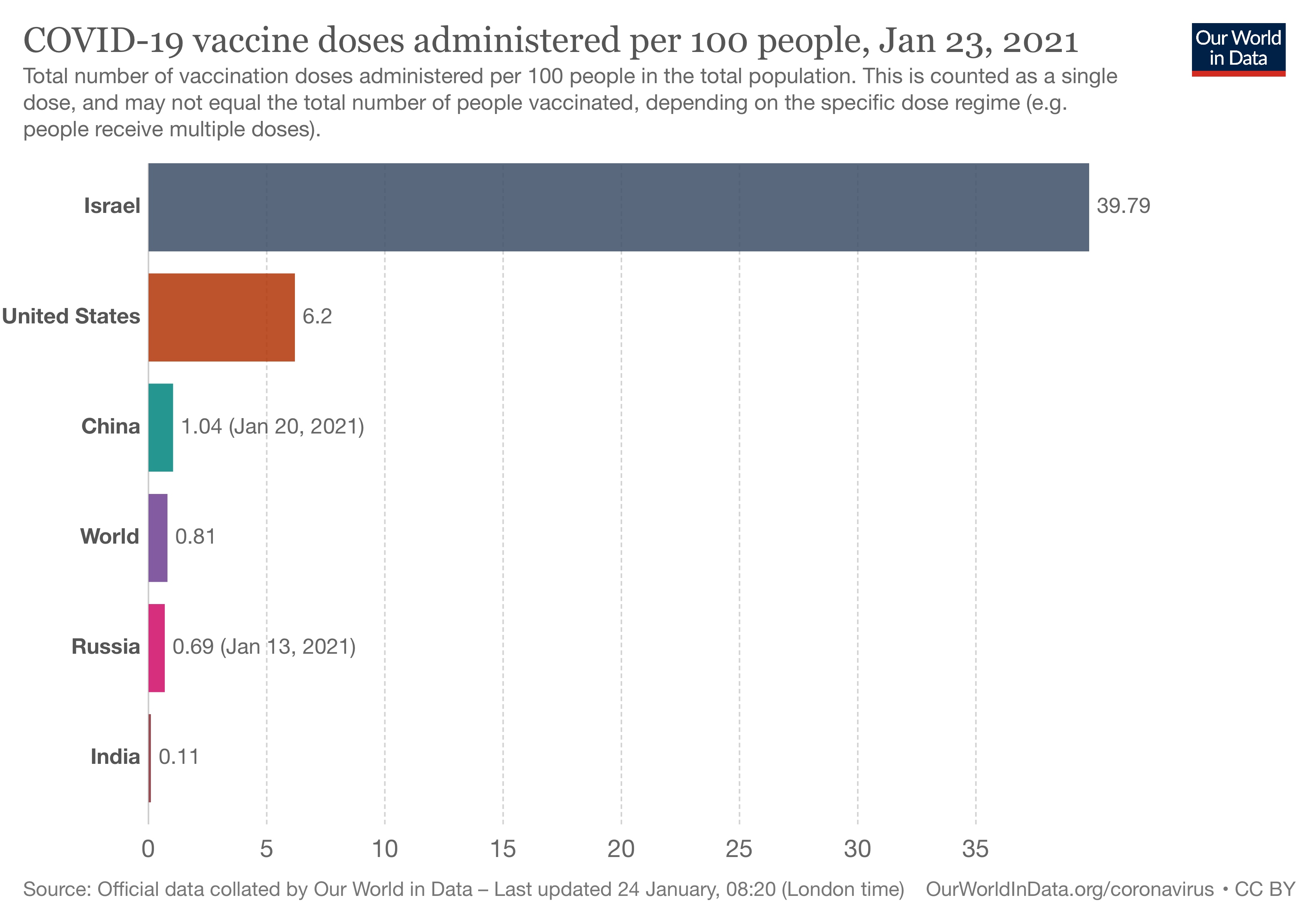 Remember, these are doses, not those fully immunized.
Remember, these are doses, not those fully immunized.
Herd Immunity in the US
First, let’s consider the number that has now been fully immunized. Remember, this value will lag behind any increases in immunizations given by three to four weeks. The good news we doubled the fully vaccinated; the bad news, it is still less than one percent. If we maintain the same number of fully immunized each week, we reach herd immunity in roughly 20 months
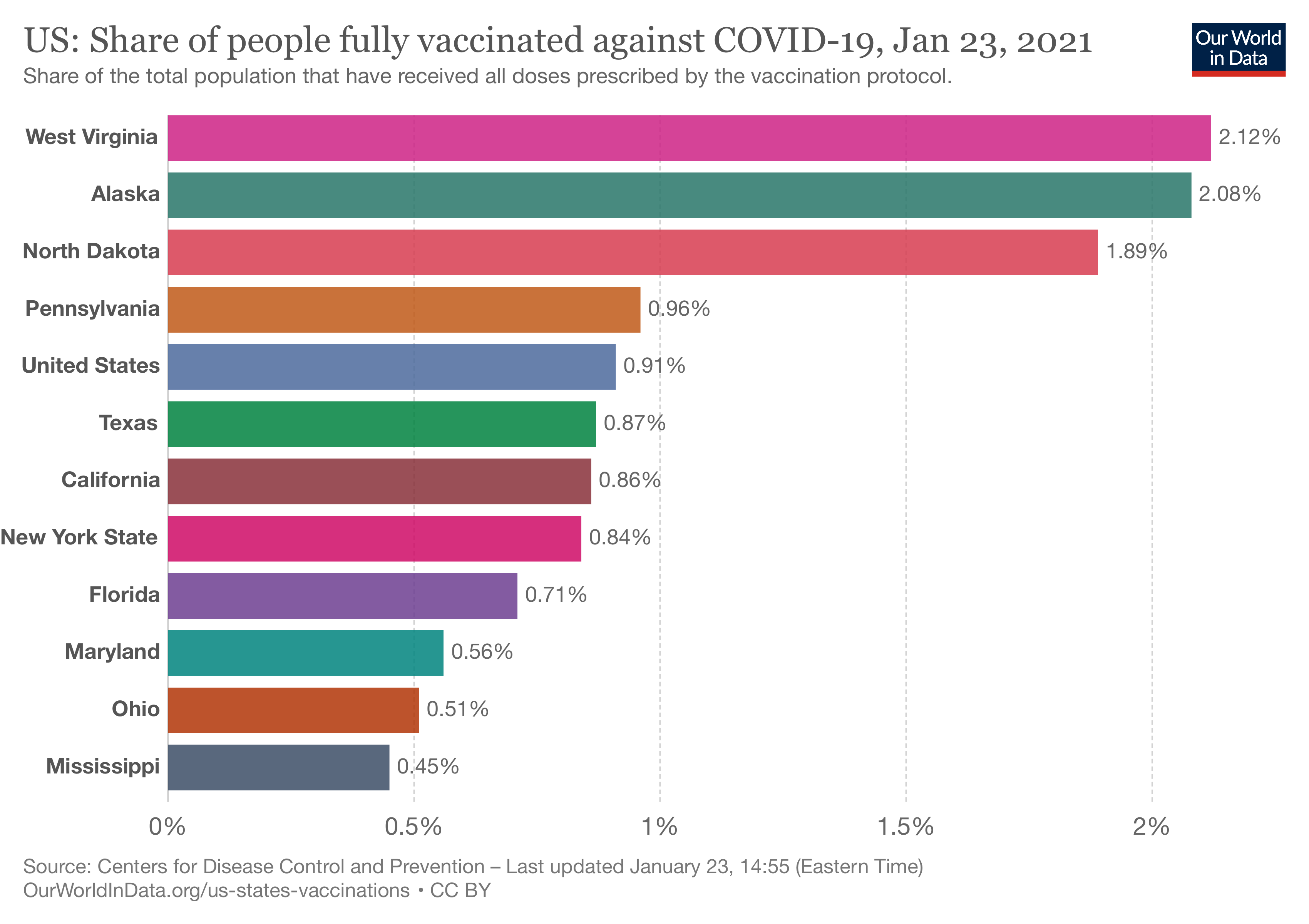 Vaccination Operations
Vaccination Operations
How quickly we improve those numbers comes from how many are being vaccinated daily. As a reminder, to meet the requirement of vaccinating a million individuals a day, the number per 100 needs to be 0.28; to fully vaccinate a million people a day, the number rises to 0.56. Good news, for the week, the US has exceeded vaccinating a million people a day. At those numbers, herd immunity is still a year off.
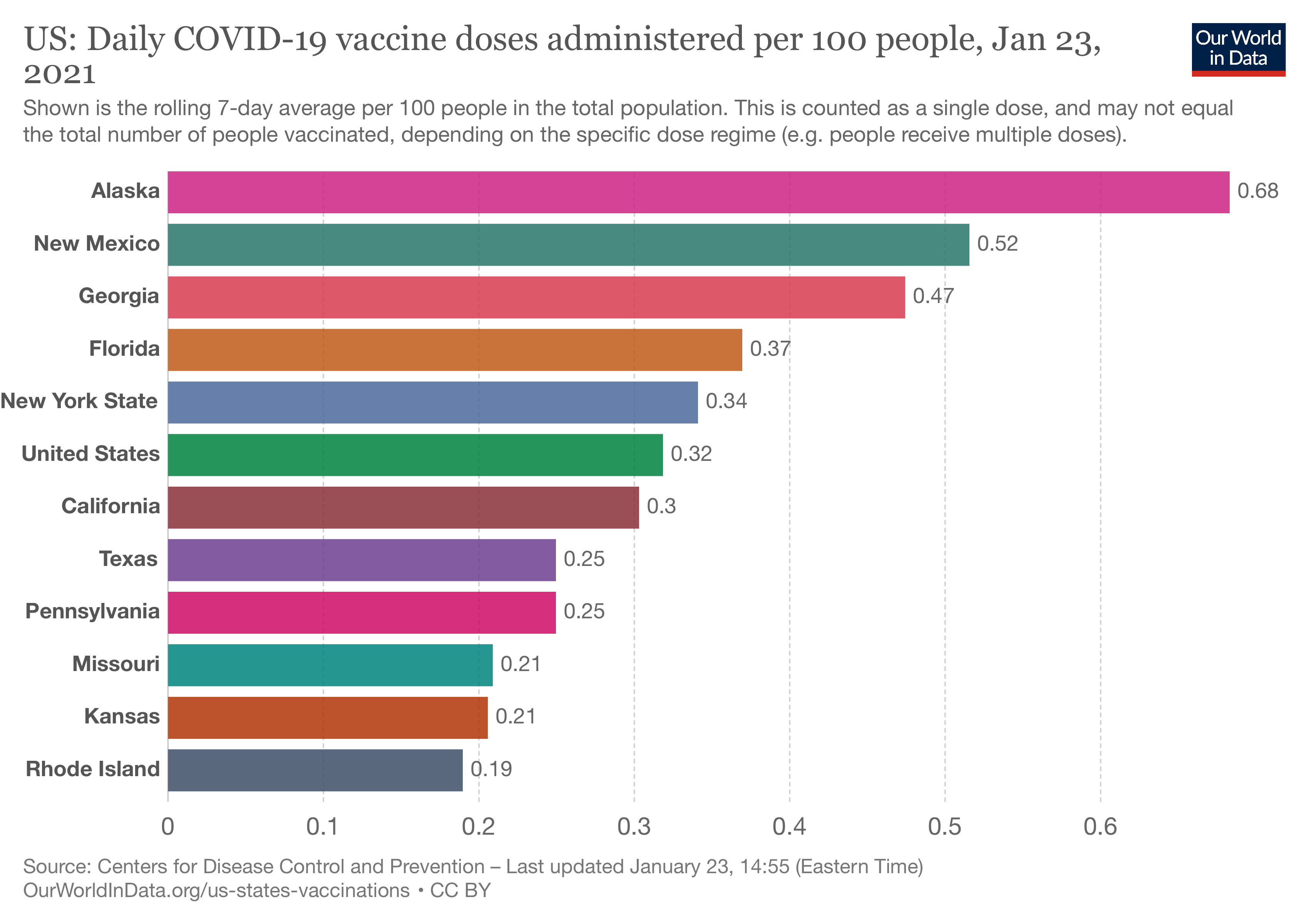 There were changes at the top and bottom; Alabama and Maine have caught up with the national average, Mississippi not so much. All have been replaced by Missouri, Kansas, and Rhode Island. At the top of vaccinations, Arkansas and West Virginia have dropped their rates Alaska is continuing at its previous pace. Editorial Note: because of the churn at the top and bottom, I will just be presenting graphs of our top five most populous states and remarking on any other changes I think may be pertinent.
There were changes at the top and bottom; Alabama and Maine have caught up with the national average, Mississippi not so much. All have been replaced by Missouri, Kansas, and Rhode Island. At the top of vaccinations, Arkansas and West Virginia have dropped their rates Alaska is continuing at its previous pace. Editorial Note: because of the churn at the top and bottom, I will just be presenting graphs of our top five most populous states and remarking on any other changes I think may be pertinent.
With basically all of the states behind where we need to be, the next question is how much more efficient the states are becoming. California and Florida seem to be doing the best, with New York holding its own. Pennsylvania and Texas have seen fewer immunizations. The three doing even worst include Arkansas, New Jersey, and DC – I’m inclined to give DC a break because they had many other issues on their plate this week. Nationally we have immunized 11% more than last week.
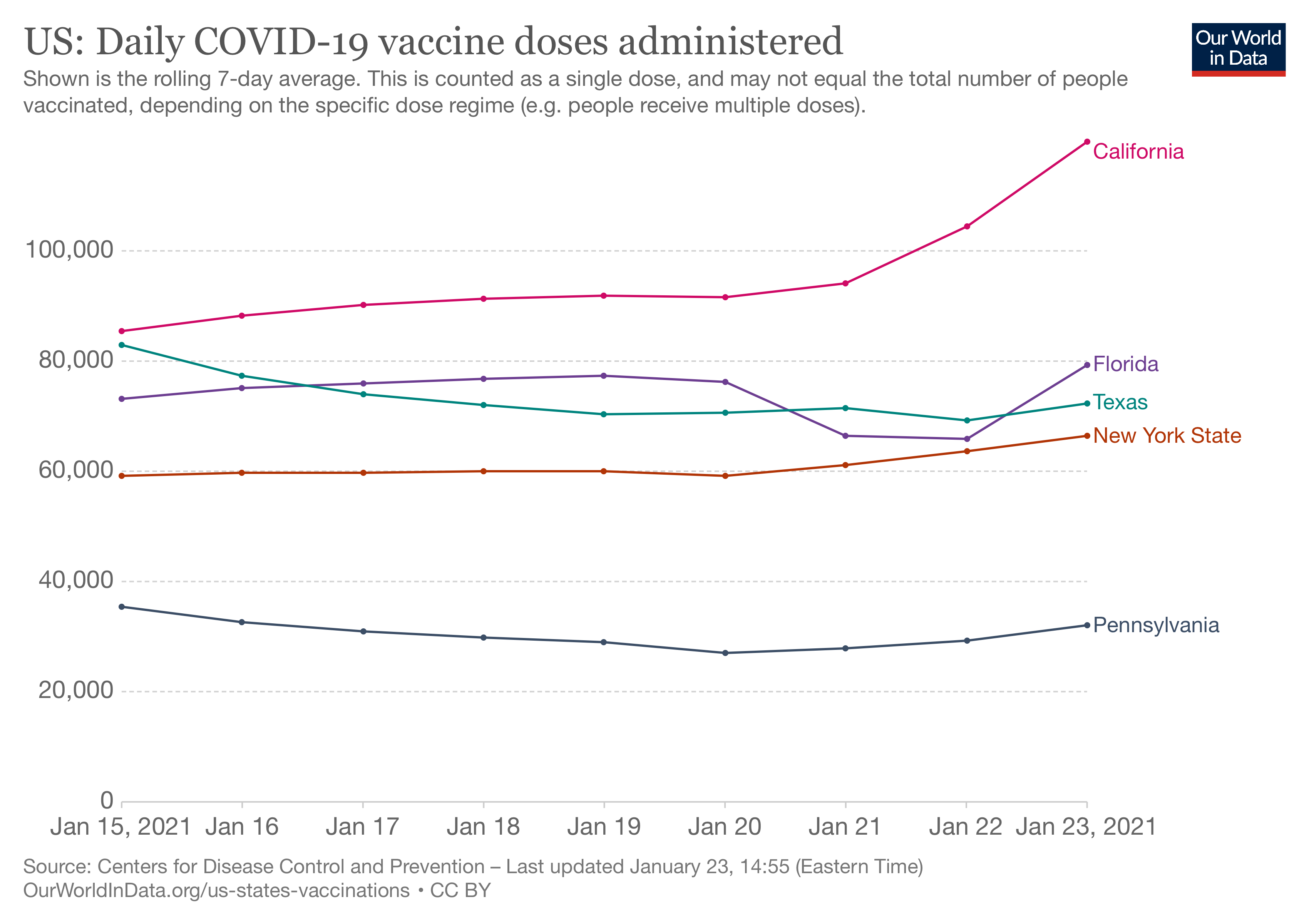 The vaccine shortage
The vaccine shortage
Operational efficiency requires not only a good process, flowing patients quickly through the system, but it requires vaccine. The mainstream media is full of statements by our mayors and governors that they need more vaccine; they are coming up short. Now, while that may be true in some instances, the data suggests otherwise.
“At this rate, we’re going to be out in two days,” he said during an afternoon briefing. “We’re going to have to start moving the next allocation quickly.” Governor Cuomo of New York
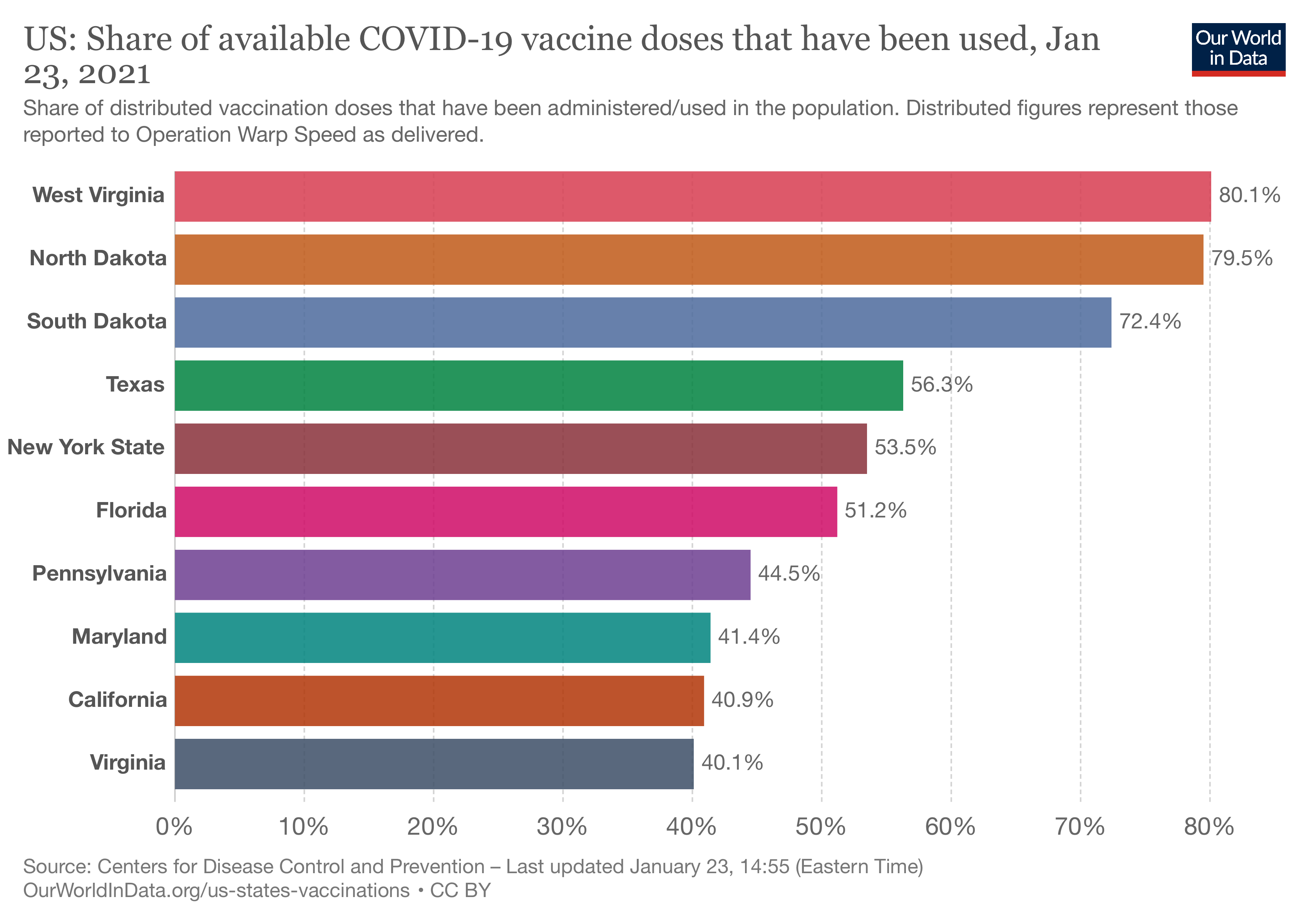 Despite the Governor’s statement, New York has over half of its delivered supply. Overall, US utilization is up to 50% of our distributed vaccine, last week, it was 39%, so we have made improvements in getting the vaccine to where it needs to be. I would think a utilization rate closer to 80 to 85% would assure adequate supplies for the vaccination centers to be working at capacity without delays.
Despite the Governor’s statement, New York has over half of its delivered supply. Overall, US utilization is up to 50% of our distributed vaccine, last week, it was 39%, so we have made improvements in getting the vaccine to where it needs to be. I would think a utilization rate closer to 80 to 85% would assure adequate supplies for the vaccination centers to be working at capacity without delays.
Hopefully, in the next week, our immunization rate will increase towards 0.58 or greater per 100, and we will see greater utilization of the vaccine on hand. When we reach herd-immunity remains unclear with estimates based upon this data that goes from months to years. My expectation is that the numbers will begin to come together over the next few weeks.

